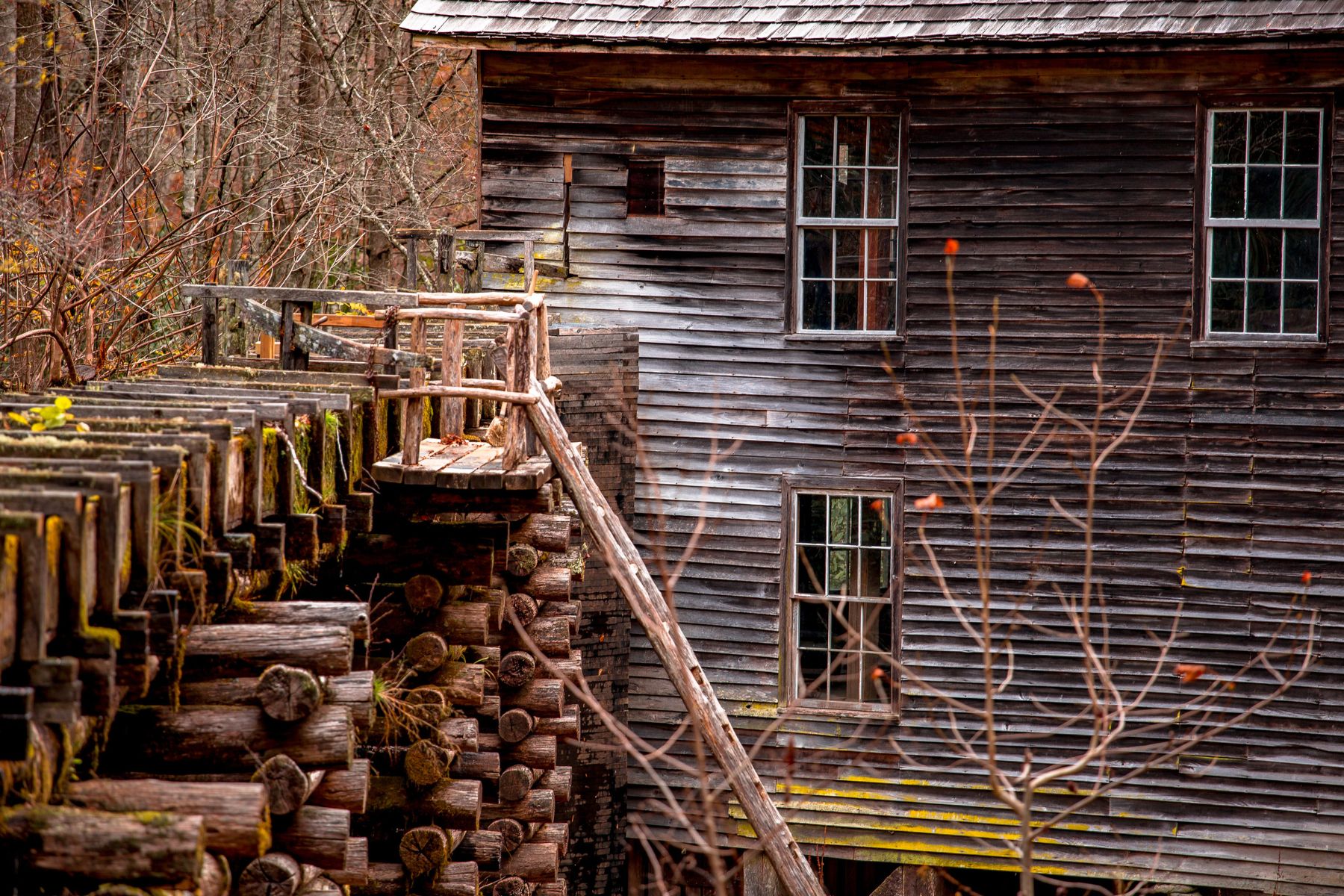
ARTICLE OVERVIEW: Mingus Mill at Great Smoky Mountains National Park
The gristmill is one of the most iconic signs of early Appalachian living, and one of the largest and best preserved is the Mingus Mill at Great Smoky Mountains National Park.
Located in the Oconoluftee River Valley, near the Cherokee entrance to the park, this mill is still in working order. It’s also one of the most interactive places to visit in the Smokies. You’ll find more than a mill here – demonstrations, stories, cemeteries, trails, and waterways all fuel the legendary Mingus Mill.
It’s important to note that Mingus Mill’s rehabilitation project started in 2023 and will remain closed until work is complete. Park officials tell us the full project will take two years at the longest, but always check those park conditions before you go. I’m going to tell you how you can still visit during the preservation work and things to do near Mingus Mill.
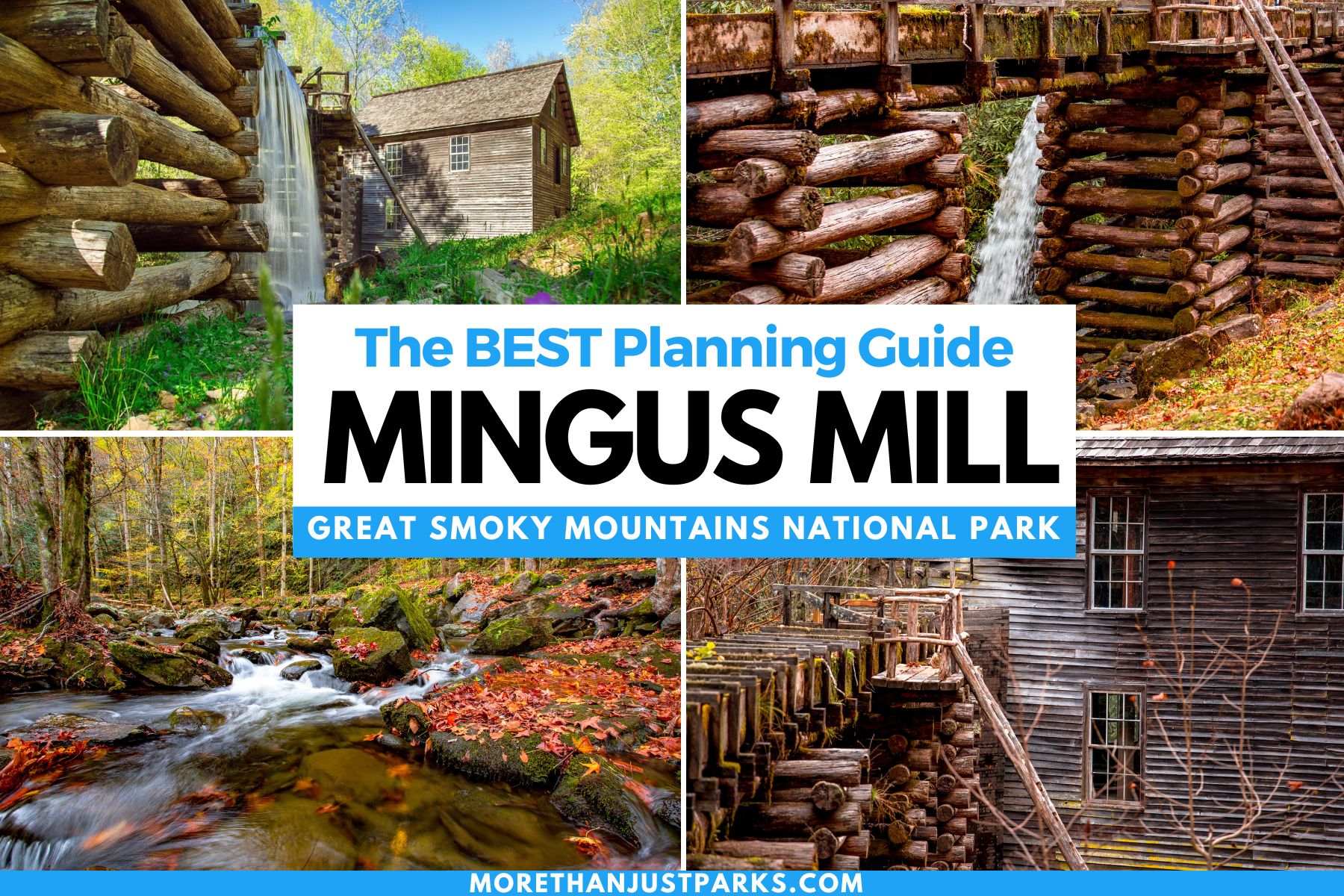
TABLE OF CONTENTS: Mingus Mill at Great Smoky Mountains National Park
Table of contents: Mingus Mill at Great Smoky Mountains National Park
5 Quick Things to Know About Great Smoky Mountains National Park
- Great Smoky Mountains National Park comes without an admission fee, but you will need a parking tag if you plan to park more than 15 minutes. In fact, the money from the parking fees helps provide funding for projects like the Mingus Mill rehab.
- Mingus Mill sits just north of the Oconaluftee entrance in Cherokee, North Carolina. I’ll show you a map of how to get there, but it’s right off the southern end of Newfound Gap Road.
- You can visit Mingus Mill from 9am to 5pm daily from spring through fall. Check the exact dates and times when the rehab work is complete. I’ll also update this section when that information is released.
- Carry a map and/or guidebook of Great Smoky Mountains National Park with you, especially if you plan to explore the trails. Mobile service is unreliable.
- Mingus Mill offers a comfort station with restrooms and a drinking fountain. This was added as more guests were interested in visiting the historic gristmill.
Mingus Mill History
The Mingus family settled in this region around 1792. John Jacob Mingus bought up land around the self-named Mingus Creek. While the farmland was fertile, the isolation of the Oconaluftee River Valley meant long travels to sell products.
In 1800, the first Mingus Creek Mill was built. Now owned by Dr. John Mingus, the land was gifted to his son, with the stipulation that a new mill be built within two years. By 1886, a new mill – about as modern of a design as you could find in those days – stood in its place. That’s the one standing today.
It cost $600, which is about $20,000 in 2024. Farmers now brought their wheat and corn to the grist mill with Dr. John Mingus’s son, Abraham, running the operation with nephew John Leandus. As the only mill in the valley, business was good for the next 45 years or so.
That’s when the National Park Service acquired the land for the upcoming Great Smoky Mountains National Park.
African American History at Mingus Mill
Great Smoky Mountains National Park added two new information panels at Mingus Mill as part of the African American Experiences in the Smokies. This project changed some of what we know about the Mingus family. That includes the fact that one of the Mingus daughters, Clarinda, was involved with an enslaved carpenter at the Mingus Farm.
She gave birth to a son and then remarried, leaving her son with her grandparents and great-grandparents. Charles Mingus left North Carolina in his early teenage years, fighting for our country and then becoming a Buffalo Soldier.
Without telling the whole story (though you can read it here if you can’t wait), the project traced the bloodlines to Eric Mingus, the grandson of Charles Mingus Senior. Eric performed at the June 2023 unveiling of the information panels that tell the African American side of a family story that was once thought to be only about white settlers.
Getting to Mingus Mill
Newfound Gap Road runs through the park with entrances at the north and south end. Gatlinburg is north, and Cherokee is south. From Gatlinburg, drive 31 miles on Newfound Gap Road. Mile markers on Newfound Gap start at 0 in Gatlinburg. Mingus Mill is at mile 29.9. Turn right on the paved road at that distance.
From Cherokee, you’ll go two miles past the entrance and take a left onto the paved road, which quickly turns into a parking lot.
The paved walkway to the mill sits right by the restrooms, formally called the Mingus Mill Comfort Station. Walk about 200 feet to arrive at the mill.
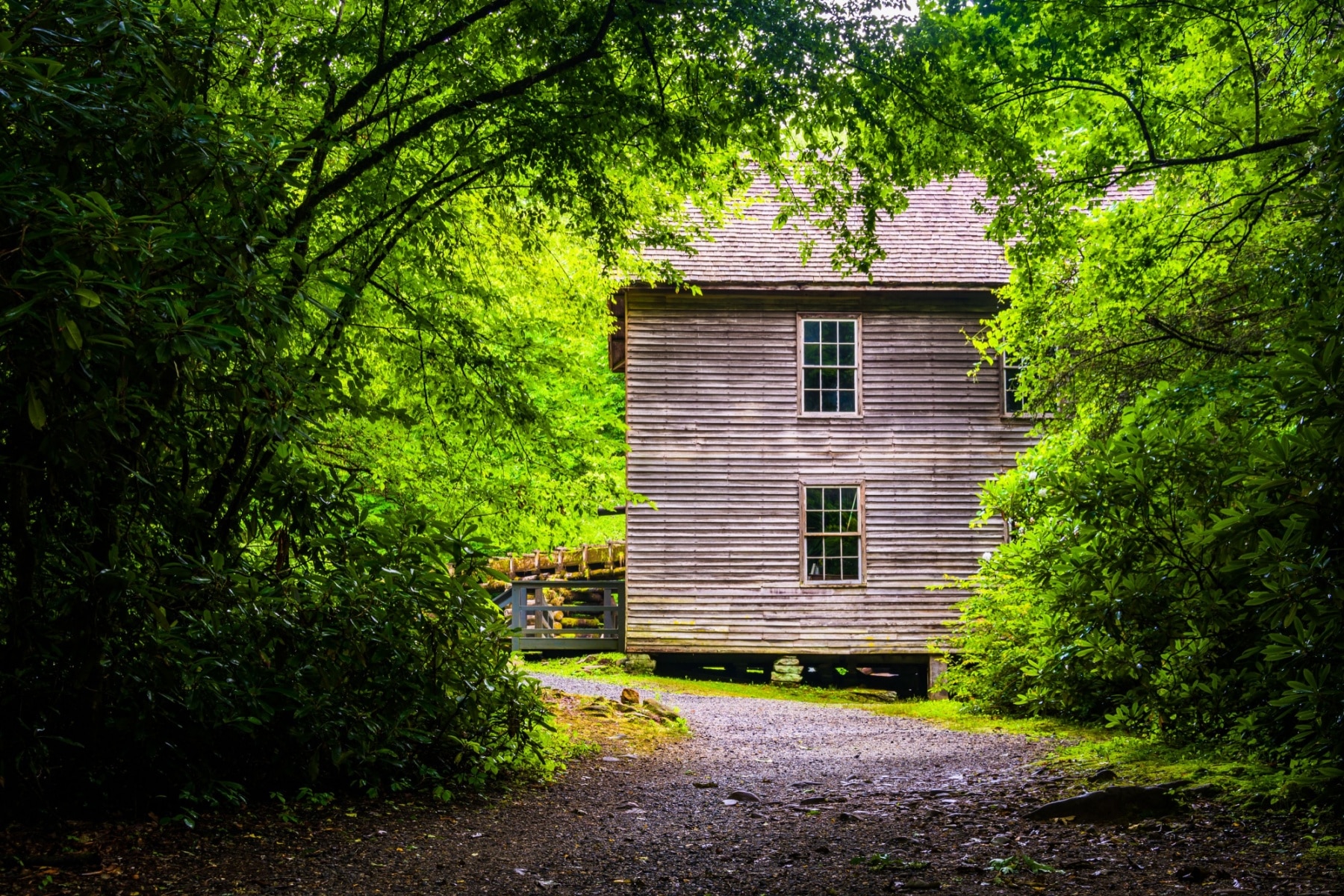
Mingus Mill Map
I’ve noted the location and some of the closest things to do nearby below. Keep in mind that even during seasonal closures, outside access to Minus Mill, the trail, and cemeteries is allowed.
Things to Do at Mingus Mill
You get several places to explore, if you’d like, around the mill. First, let’s start at the mill grounds.
Mingus Mill Tour
Walk around the mill to see how it works, with a 200-foot flume feeding from Mingus Creek into the two-and-a-half-story building. Remember, this was once the largest mill in the Smokies and considered state of the art for that era. That means you won’t see the traditional water wheel you might associate with grist mills. A turbine under the building powers the machinery.
Be sure to seek out the dam, mill race, flume, and penstock outside the building that gets the water from the creek, filters it, and moves it into the turbine chamber. The mill still works with Mingus Mill-made cornmeal for sale on-site when mill demonstrations are underway. Millers explain every step of the process and walk you through the inside of the mill.
I’m genuinely trying to balance telling you about the mill without stealing too much from the millers and educational kiosks around Mingus Mill.
Mingus Creek Trail
The short path to Mingus Mill is actually the start of the Mingus Creek Trail. Unless you plan to backpack for a few days, you’ll treat this as an out-and-back hike.
One option takes you to Newton Bald, which is six miles each way with almost 3,000 feet in elevation change. A backcountry campsite at Newton Bald can be reserved. The other option follows Mingus Mill Creek for three miles until meeting up with the Deeplow Gap Trail.
One word of caution comes with the watery nature of this trail. As the name suggests, you either walk alongside or in a creek. Plus, no less than half a dozen other creeks lead into this one as they march toward the Oconaluftee River. You’ll need waterproof boots.

Mountain Farm Museum
I’ve spent a lot of time researching Great Smoky Mountains National Park for the Pattiz Brothers here at More Than Just Parks, and the deeper I go, the more I want to know.
For example, the collection of homes and buildings moved to the Mountain Farm Museum, just less than a mile south of Mingus Mill, were taken from different areas of the park. That was supposed to be at the Mingus Mill site, according to plans from 1938. Between World War II, staffing challenges, and indignant attitudes by some toward the cultural preservation of mountain life, an exhibit was set up at the south entrance.
After incredible success in 1948, the entire museum footprint moved to that location. Mingus Mill would be a highlight of the park, just not part of the museum complex.

Cemeteries Near Mingus Mill
Three cemeteries connected to the Mingus family surround the site. One is about two miles up the Mingus Creek Trail. The Mingus family cemetery is just up Newfound Gap Road on a trail you wouldn’t even notice if you weren’t looking for it.
The third cemetery path that starts right off the cemetery is that of enslaved people. It’s known as the Enloe Slave Cemetery. At the burial sites, only rocks sit where carved headstones should be. No more than six people were buried here, but their identities were forever buried with them.

Mount Mingus
The mountain bearing the Mingus name is in the park, but not in North Carolina. You’ll need to drive about 20 miles north. Mount Mingus sits between Sugarland Mountain and Chimney Tops with the Road Prong Trail weaving around it. Access that trail from Chimney Tops Trail or the Appalachian Trail at Newfound Gap. No trail leads to Mount Mingus’ 5,800-foot summit.
When to Visit Mingus Mill
Seasonal limitations rule out visiting the working mill in winter. The tree-lined pathways to, from, and around Mingus Mill make it an epic stop for fall foliage. However, the spring wildflowers and lush greenery are endearing as well.
As noted above, Mingus Mill’s closure for renovations could extend into 2025 or beyond, so check park conditions and alerts before you go. Otherwise, just enjoy a walk around this slice of mountain life. You would be surprised to know how close it was to being left to rot or dismantled.
LOOKING FOR FRESHLY GRISTED GOODS?: While Mingus Mill undergoes preservation and rehabilitation, you can visit Saunooke’s Mill in Cherokee, which also sells corn meal, grits, and a variety of other flavors, all made through the working gristmill.
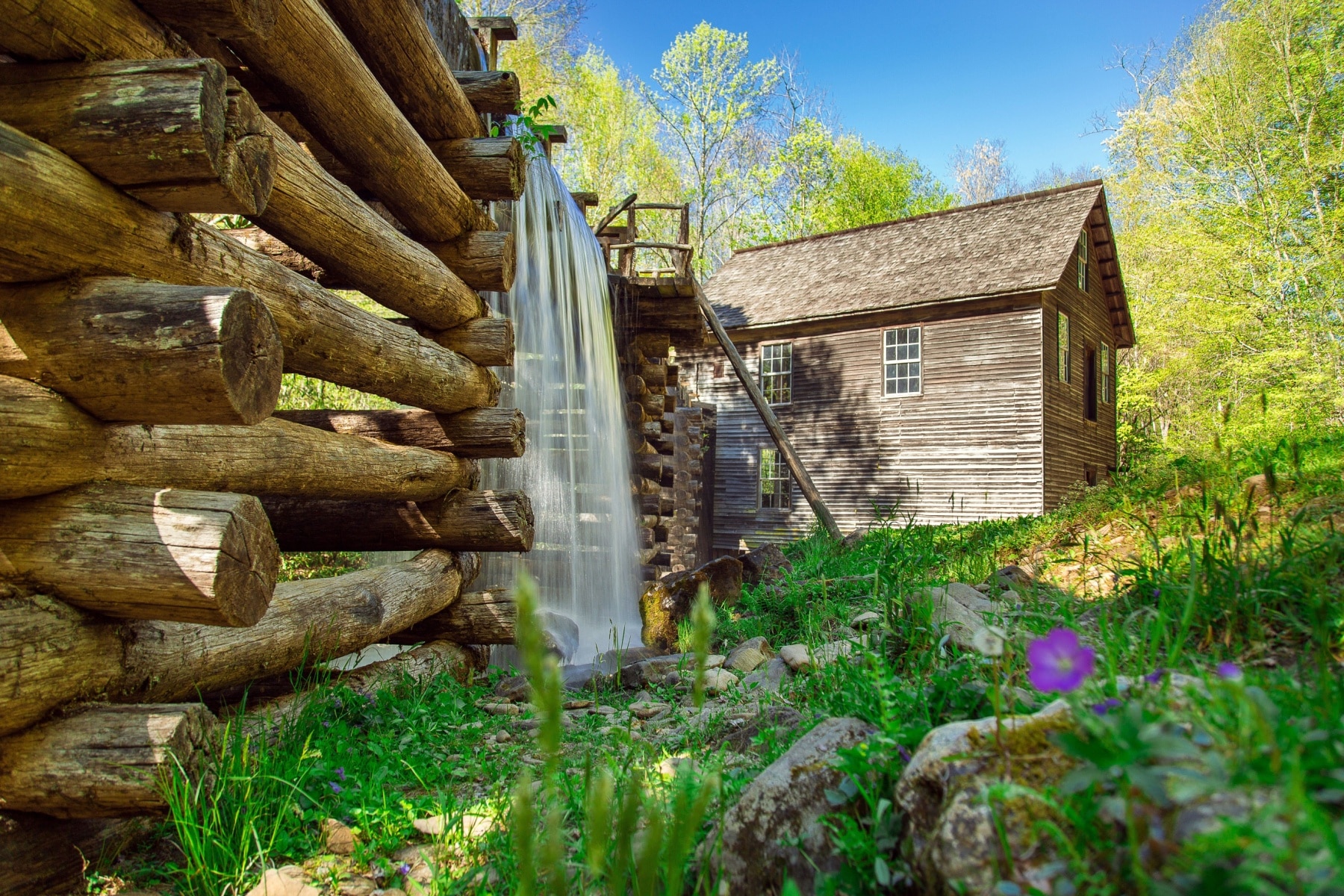
Mingus Mill Waterfall
The only wear falling at Mingus Mill is from the 200-foot flume where the filter gets rid of leaves and sticks, but many people confuse the name Mingo Falls (and it’s also where Google leads you when looking for “Mingus Mill Waterfall.”) To be clear, Mingo Falls is close enough to Mingus Mill that you could see them both in one day., yet they each have no connection to the other.
To access Mingo Falls, drive 6.5 miles from Mingus Mill outside the park to Big Cove Connector. The waterfall is on the Qualla Boundary Land Trust of the Eastern Band of Cherokee. In fact, the Cherokee call it Big Bear Falls.
I call it the “Hope You Like 161 Steep Steps” waterfall because that’s what you face on the short hike up to the viewing platform. Yeah, it’s just 0.4 miles roundtrip, but every step up raises your heart rate and every step down challenges the strongest of knees. The reward is a 120-foot cascading waterfall. You (almost) forget about the mosquitoes circling your head. Almost.

Great Smoky Mountains National Park Film
We’re proud to highlight the beauty of the Great Smoky Mountains National Park, including Mingus Mill, in one of our national park films. We hope you can take a few minutes to watch the beauty of this Appalachian gem.
Pin Mingus Mill at Great Smoky Mountains National Park
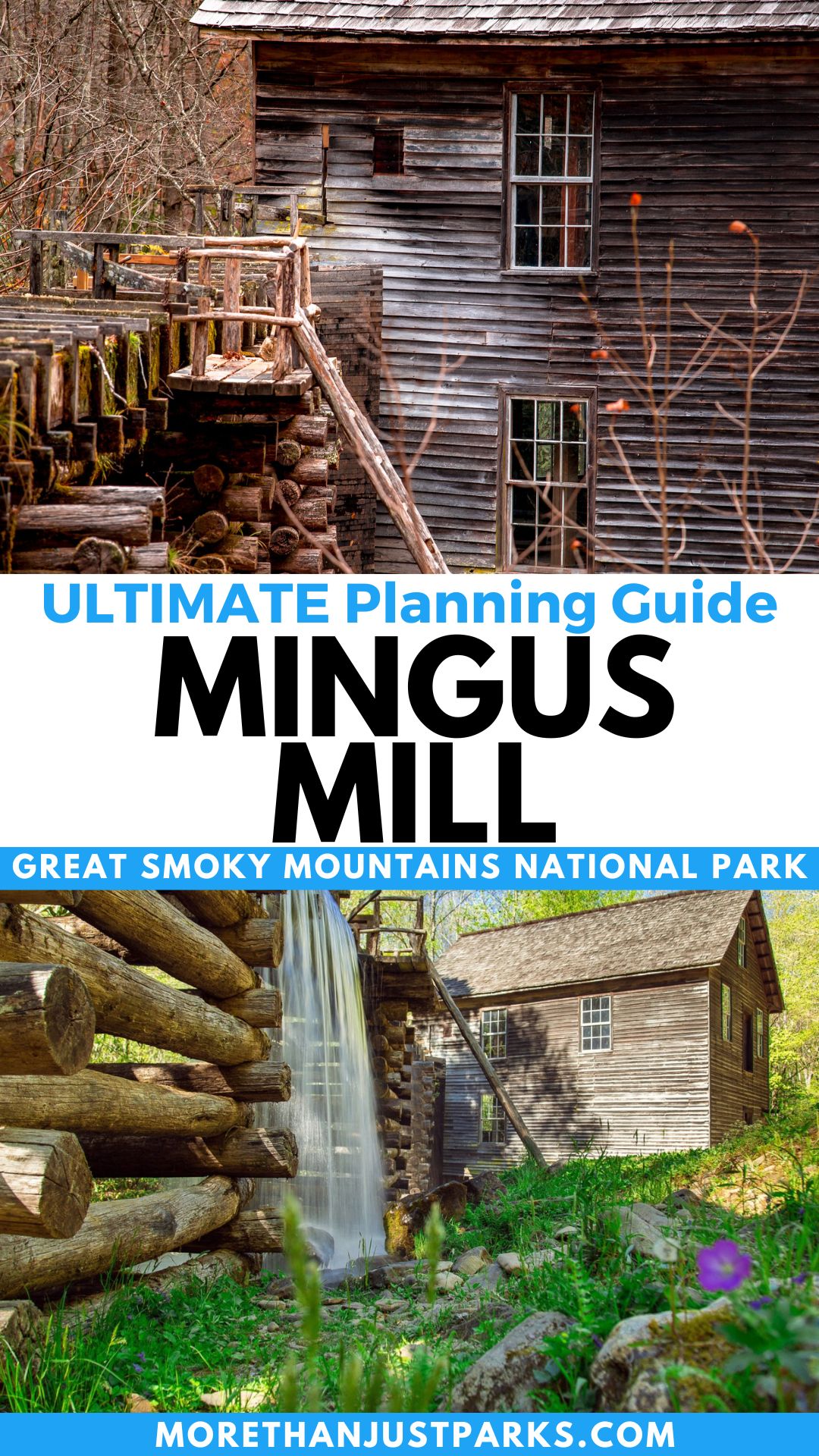

Helpful Related Links
Great Smoky Mountains Activities: 15 Incredible Things to Do in Great Smoky Mountains National Park
Newfound Gap: Visiting Newfound Gap Overlook
Clingmans Dome: Clingmans Dome at Great Smoky Mountains: Tips, Tricks, & Secrets
Andrews Bald: EPIC Andrews Bald Hike in Great Smoky Mountains National Park
Best Hikes Great Smoky Mountains: 15 Best Hikes in Great Smoky Mountains National Park
Visiting Cades Cove: Cades Cove Visiting Guide (Helpful Tips + Map)
Tennessee National Parks: 15 AMAZING Tennessee National Parks Worth Visiting (Guide + Photos)
Best East Coast National Parks: Top 10 Best East Coast National Parks Ranked
National Monuments Ranked: ALL 128 US National Monuments Ranked (Best to Worst)
National Parks Ranked: ALL 63 US NATIONAL PARKS RANKED By Experts
Free Downloadable National Parks Map: LIST & MAP of National Parks By State (+ Printable Checklist)
Most Visited National Parks: Top 10 Most Visited US National Parks
Georgia National Parks: 10 Amazing Georgia National Parks Worth Visiting
South Carolina National Parks: 8 Epic South Carolina National Parks Worth Visiting
North Carolina National Parks: 12 Epic North Carolina National Parks Worth Visiting
National Parks Road Trip: 10 EPIC National Parks Road Trips (Expert Guide)
Virginia National Parks: 30 EPIC Virginia National Parks Worth Visiting (Helpful Guide + Photos)

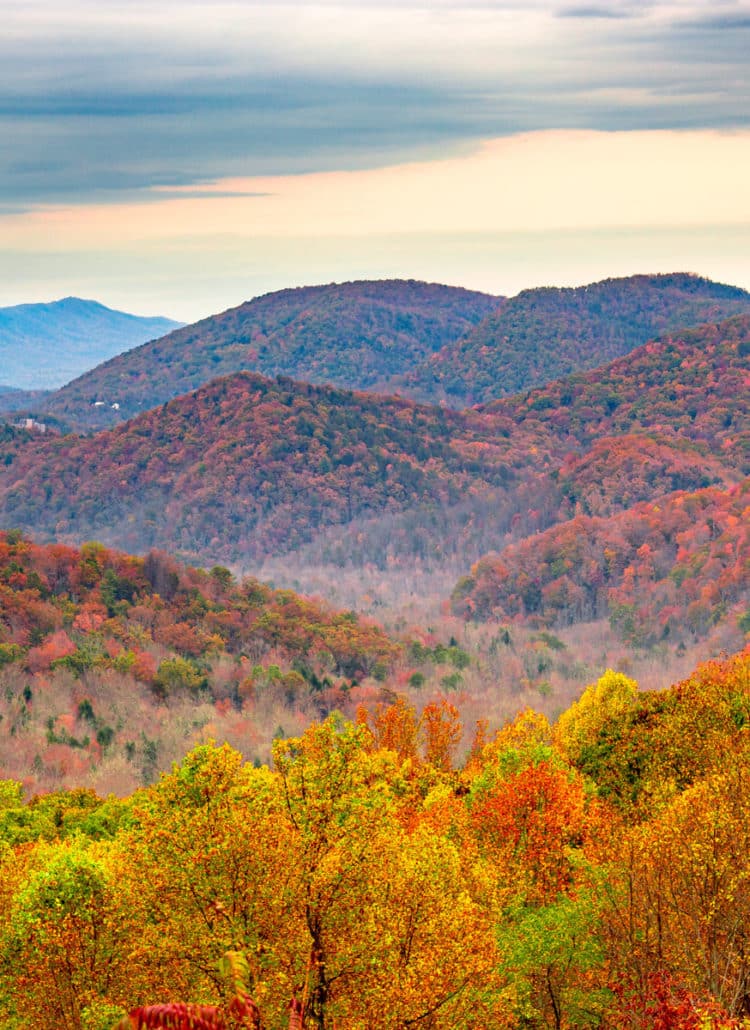


Leave a Reply